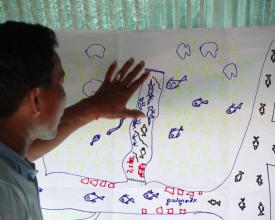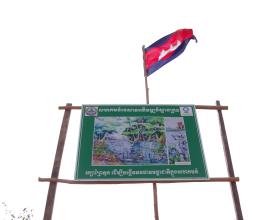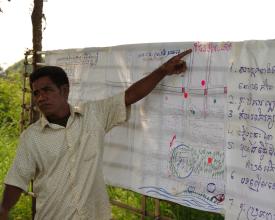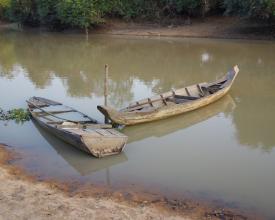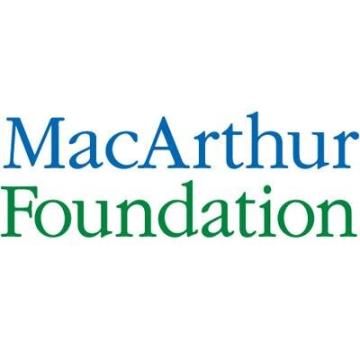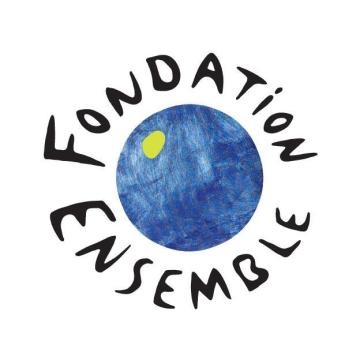Building community capacity to manage freshwater fisheries in Cambodia
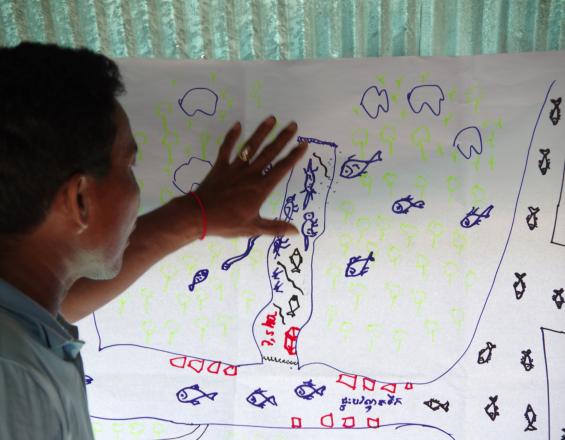
Cambodia is home to one of the world’s largest inland fisheries. Centered around the Tonle Sap Lake and Mekong River, the fishery provides food and livelihoods for millions of people. Much of this common resource is managed by Community Fishery Organizations (CFi’s) - local fishers with a government mandate managing their local area to benefit their fishery resources. Unfortunately, Cambodian fishers are some of the country's poorest and most marginalized people. And the majority of Cambodia’s CFi’s are dysfunctional. Establishing functional CFi’s requires significant community capacity building, as CFi’s face challenges with government registration, organizational capacity, financial literacy, planning and implementation. Conservation International’s community capacity building approach addresses these issues and we have successfully partnered with fourteen CFi’s who are active in managing their local fishery resources.
Context
Challenges addressed
As most Community Fishery organizations in Cambodia are under-resourced, they are unable to adequately manage their local fishery resources. Their challenges include the destruction of flooded forests and shrublands for agriculture and by deliberately lit fires and illegal and overfishing. Whilst climate change and upstream hydropower development are altering natural flow regimes, which further threatens the fishery. Climate change is also seeing longer and hotter dry seasons and shorter but more intense wet seasons. Most lake communities have little or no capacity to manage their natural resources, or adapt to these changes, which are steadily degrading their livelihoods.
Location
Process
Summary of the process
The four building blocks are complimentary. Block 1 - the SWOT and Situation analysis determine suitable communities and reveal information which is built upon in later blocks. Block 2 - Government liaison interacts with Block 1 as the support of local authorities is critical for long-term CFi success. Capacity is then built on these two blocks through Block 3 – community resource mapping and Block 4 CFi Committee training. Thes blocks provide the CFi with the structured knowledge and skills required to successfully manage their fishery resources.
Building Blocks
Government Liaison
As Community Fisheries operate under a government mandate engaging the local authorities - especially the Fisheries Administration Cantonment and local Commune officials - is critical to the success of any engagement with a CFi. Local authorities need to understand, and support, Conservation International’s engagement with a CFi. First, we meet with the Fisheries Administration at national and local levels, presenting our programme, and identifying potentially suitable CFi’s. These meetings build relationships with senior government officials and obtain information such as local contacts within potential CFi’s. Having established high level support we contact local authorities such as the commune and in briefing them of our approach gain an appreciation of each CFi’s current status, challenges and opportunities.
Enabling factors
Establishing the support from senior government officials is an essential first step. Then the local authority’s participation is required as they participate in the planning process and provide official recognition of legal documents associated with CFi development. Ideally the implementation team can build on established links with relevant local authorities. However, they must understand the context within which these local authorities operate and how our CFi development activities enhance the local authorities’ roles and responsibilities. This process needs to be conducted by senior project staff with experience in government relations.
Lesson learned
Early engagement with local authorities is important as their involvement is crucial to the success of any engagement with a CFi. They will also provide the project team with additional information on CFi capacity and increase the likelihood of successful engagement with a CFi.
SWOT, Situation and Climate Vulnerability Analysis
A situation analysis provides background information upon which community capacity building efforts are based. First, we conduct a rapid SWOT analysis of a Community Fishery (CFi) and its associated community. The SWOT analysis compiles basic information about each community and examines CFi structure and function. The strengths, weaknesses, opportunities, and threats faced by each community are addressed in a group discussion among the implementation team and a small number of community representatives. The Climate Vulnerability Analysis builds a picture of each community’s unique climate change challenges, particularly those associated with their Community Fish Conservation Areas.
We use the SWOT analysis to determine if a community is suitable for further engagement and if so, we conduct a detailed situation analysis which delves deeper into a CFi’s characteristics and challenges. This allows us to decide whether we partner with a community, and if so, the results help us develop a suitable approach to working with them. The situation analysis is also used to determine women’s involvement in community fisheries – we then build on this information to increase their participation as we implement further building blocks. The Climate Vulnerability Analysis is the fire step in our extensive partnership with a community.
Enabling factors
The implementation team needs to be familiar with the community fishery context and trained in conducting the SWOT and Situation analysis. It is also necessary to build trust with the community.
Lesson learned
Important decisions are made at three steps 1) deciding which communities to initially assess and conduct a SWOT analysis 2) using the results of the SWOT analysis to prioritize communities for further assessment via the full situation analysis and 3) using the situation analysis results to decide which communities to partner with in capacity building and implementing the climate vulnerability analysis.
Resources
Community Resource Mapping
Co-creating a community assets and natural resources map sets the scene for community capacity building. A community resource map depicts both natural features (e.g. streams, ponds, paddy fields etc.) and physical infrastructure. Through resource mapping we learn how villagers manage, conserve, and use their natural resources. At least 10 knowledgeable community members should develop the community resource map, including CFi management committee and CFi members, women, elders, and local authorities. With the facilitation of the project team, a knowledgeable community member drafts the map. Before being depicted the location of important features should be discussed and confirmed by other participants. The map should also depict any formal zones (e.g. community fishing areas or community fish conservation areas) or discuss potential areas for zonation.
A group discussion follows the completion of the map to determine people’s reliance on and interaction with their natural resources, as well as major management and conservation challenges. This allows us find areas for improvement in community development, natural resources management and conservation.
Enabling factors
A suitably motivated community is required to develop an accurate and informative community resource map. The project team needs experience in facilitating community group discussions and developing community resource maps. The team also needs to ensure that women are involved in the discussions and that meetings are held at suitable times to allow them to attend.
Lesson learned
The most common challenge faced by fishing communities is the management of their dry season fish refuges. Many of these ponds are disconnected from the lake in the dry season and at risk from drying out as climate change brings longer hotter conditions in the dry season. Our community partners have suggested increasing the depth of these wetlands and creating permanent connections to the lake to ensure they remain full throughout the dry season and thus protect the fish that shelter there until the lake floods again. Another challenge faced by many communities is the difficulty in managing remote conservation areas. This often results in the establishment of new conservation areas closer to local villages which allows for closer and more effective management.
Community Fishery Committee training
Community Fisheries management is complex and each CFi committee needs to convene and record meetings, hold elections, and be financially transparent and accountable. The committee also needs the skills to work with local authorities and understand the legal framework within which they operate. We provide these skills by delivering training modules in meeting procedure, committee management, Fisheries Law, gender in NRM, environmental protection, proposal and report writing, and budget management.
Enabling factors
The CFi Committee needs to be properly structured and active before they can be trained in meeting procedure, committee management, Fisheries Law, gender in NRM, environmental protection, proposal and report writing, and financial management. The trainers must have experience in training local villagers and the training materials. The project team needs to ensure that women are involved in the discussions, and that meetings are held at suitable times to allow them to attend.
Lesson learned
Increasing Community Fishery Committee management capacity not only helps them manage their fishery resources but also builds trust with their members, donors, local authorities, and the Fisheries Administration. Our training has given CFi Committees the ability to present their work to supporters, and Commune and Fisheries Administration officials. CFi Committees are now able align their work plans with their Commune's investment strategy. The gender in NRM training has improved equality between men and women in accessing and managing their natural resources.
Impacts
We have applied our approach to fourteen Community Fishery Organizations in Cambodia. Each CFi is recognized by the Royal Cambodian Government and their active committees are implementing their management plans. Building the capacity of these organizations has directly benefited the fourteen CFi’s 7347 members (including 3856 women). Whilst 43,470 ha of fish habitat, including open water, flooded forest and shrubland, rice paddy and dry season fish refuge ponds, is under community management. This has allowed our partner communities to consistently manage their CFi by conducting patrols for illegal fishing activity - often in conjunction with Fisheries Administration officials - providing twenty-four-hour protection of their fish refuge ponds during the dry season, responding to the threat of wildfire, and delivering education sessions to both CFi members and seasonal fishers on their rights and responsibilities under the Fisheries Law. Our partner communities have also started to restore over 500 ha of flooded forest. They have also forged strong ties with their local and district government authorities.
Beneficiaries
Community fishery organization members and their families benefit through improved fisheries management. Around 300 species of fish and their floodplain habitat is preserved, along with numerous IUCN Red List threatened birds, mammals, and reptiles.
Sustainable Development Goals
Story
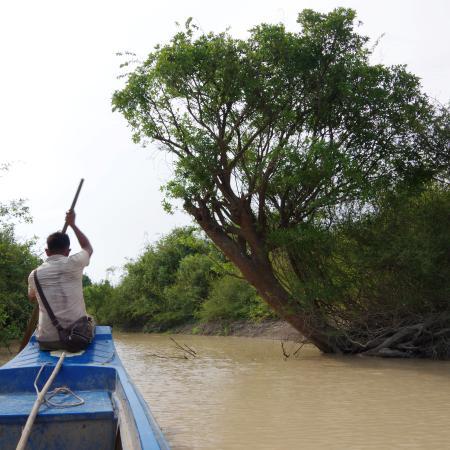
When Conservation International began working with fishing communities on the Tonle Sap Lake in 2010, villagers questioned how our conservation work would affect fishing access. Through numerous meetings we discussed our conservation aims and how they could help their livelihoods. Conducting our solution’s situation analysis, allows us to understand their circumstances, which we followed with extensive training and capacity building. Through this these communities saw the benefits of conservation work and have changed their practices to protect their resources.
For example, when we began working with Srey Chek Community Fishery (CFi) in 2015 their CFi management committee was inactive and community members told us that their fishery resources were in decline due to over exploitation and rampant illegal fishing in their CFi area. By implementing the measures described in this solution, Srey Chek CFi has a strong and committed management committee which is supported by CFi members and local authorities from the village up to the Provincial level. This support involves active participation in CFi activities and funding. The CFi Committee now regularly patrols their CFi area, often accompanied by Fisheries Administration Officials and local authorities who are legally authorized to warn or fine illegal fishers and remove illegal fishing gear. Srey Chek CFi Committee members are not only protecting their community fish conservation area, but they are also helping the Fisheries Administration guard the nearby State fish sanctuary - reporting illegal activities direct to the Provincial Governor. The CFi Committee has also released fish such as the critically endangered giant barb (Catlocarpio siamensis), and wildlife including pythons, and turtles received from CFi members and local authorities into their community fish conservation area.

